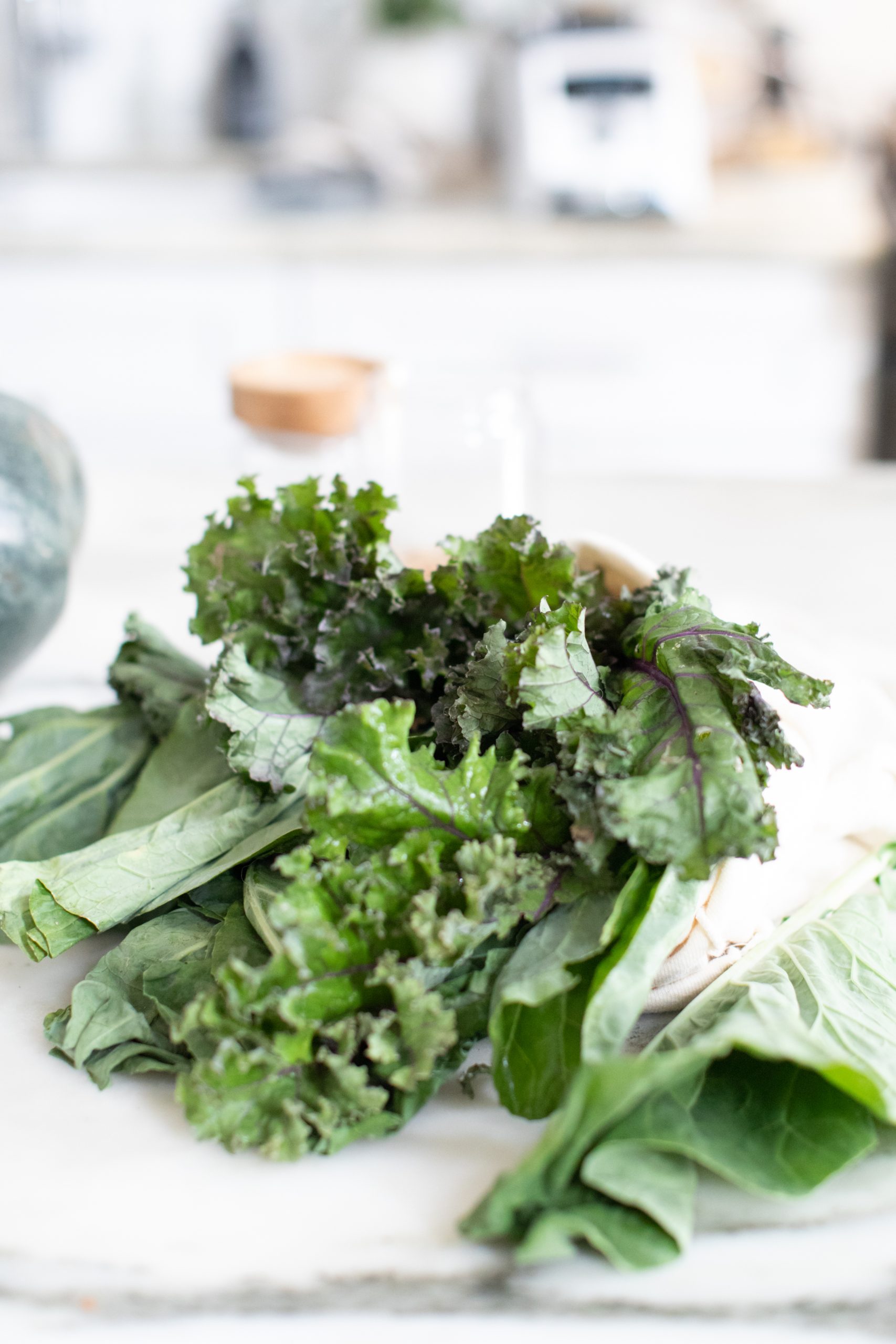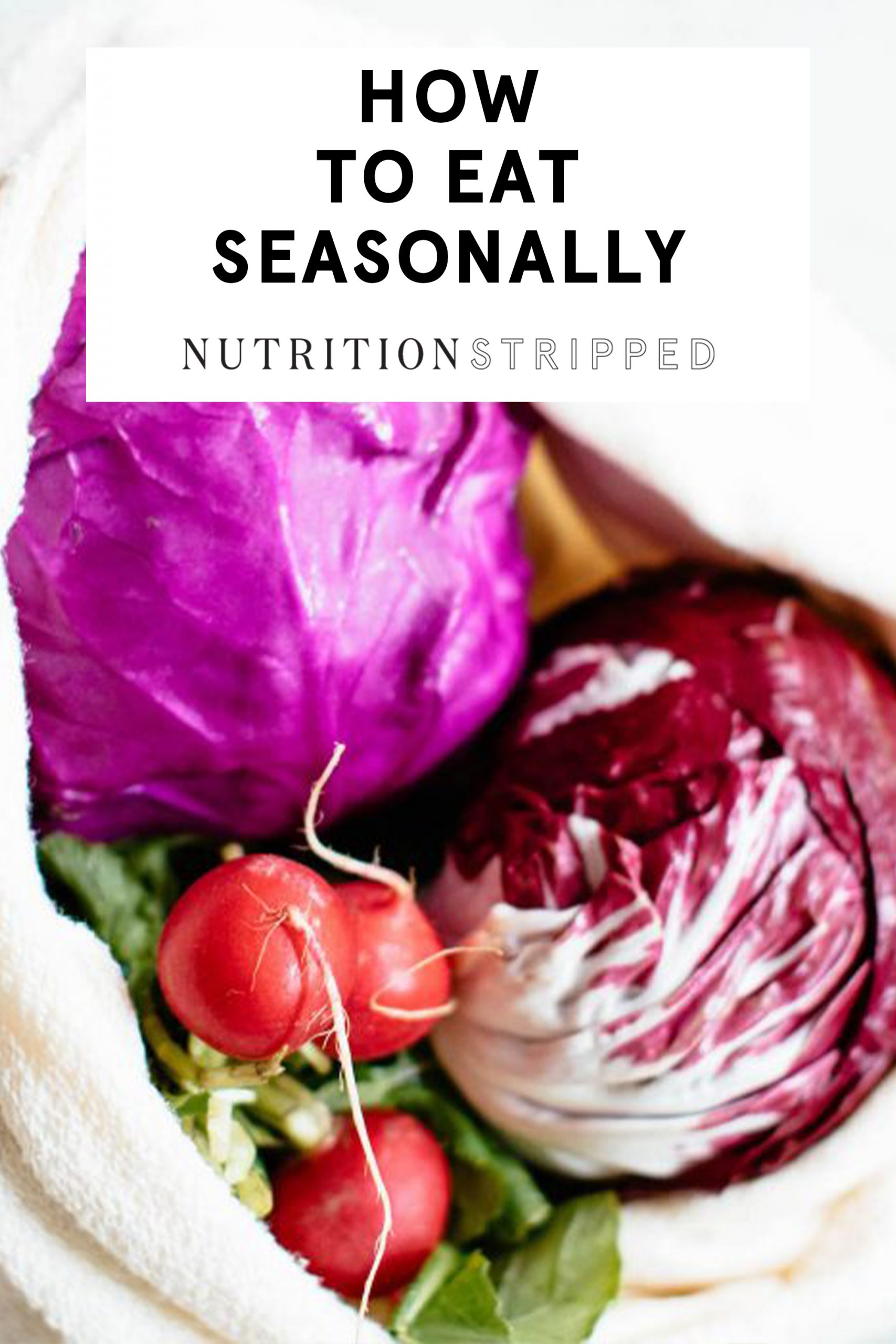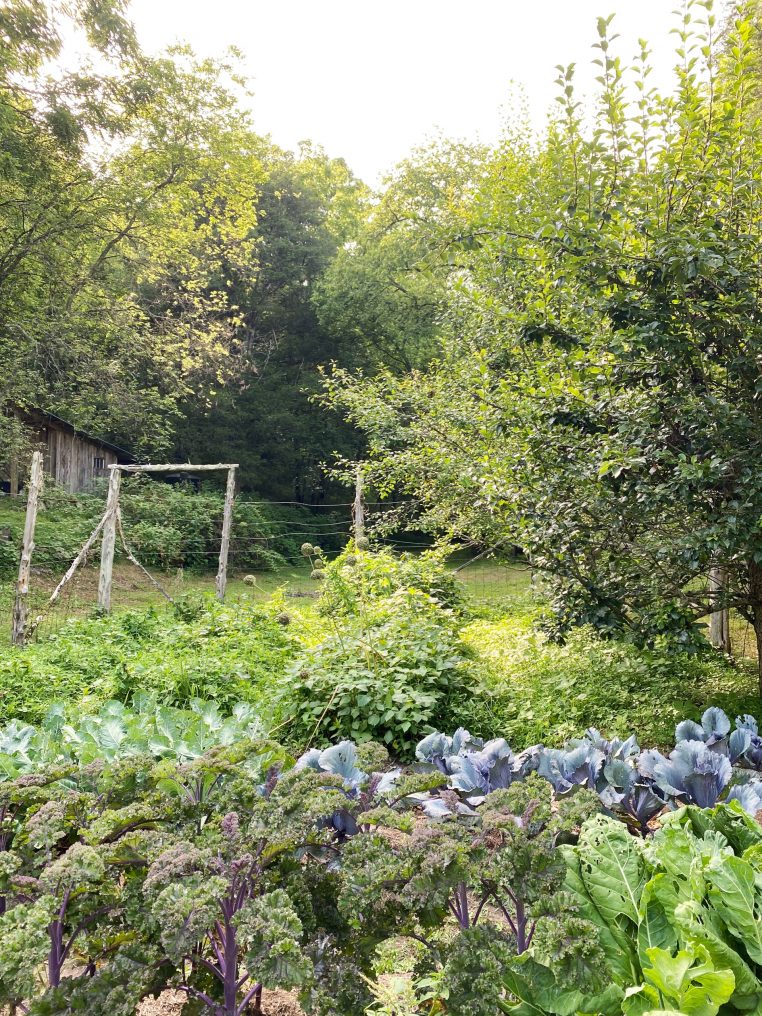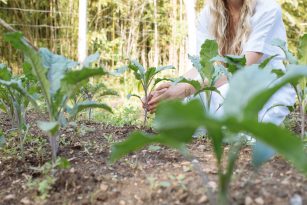When you eat seasonally you’re not only consuming foods in your region at peak ripeness and nutrient density, but you’re also supporting local farmers and your community.
When practicing a mindful eating lifestyle, one of the things we pay attention to is where our food is coming from and how it got to our plate. Eating seasonally is a beautiful way to practice mindful eating and be more conscious of where our food comes from, appreciate the abundance that Mother Nature provides us each season, and lessen the environmental impact we make through our food choices.
Eating with the seasons also allows us to nourish ourselves with an abundance of nutrient-dense foods that provide so many vital nutrients to our bodies.
Discover the benefits of eating seasonally, an overview of what produce is in the season when, and a few tips to make eating seasonally a little easier and more enjoyable.
Benefits Of Eating Seasonally

Eating seasonally offers so many benefits, from freshness, nutrient profile, sustainability, connection to our food, and pure enjoyment.
1. The Food Is At Peak Nutrient Density
Produce has the most nutrients right when it’s harvested and then it starts to decline, according to studies. So when you eat seasonally and locally, the product will not only be fresher, but more nutritious as well!
It’s also important that produce is left to grow until it’s reached peak ripeness so that it’s able to absorb all of the necessary nutrients.
Off-season produce is more likely to be picked early and left to ripen in transportation or storage. This product is often kept in cold storage for months (so that there is a supply for the off-season), or shipped in from around the world. Not only does that decrease its nutritional value, but it also creates a big environmental impact as well.
Big picture viewpoint here, off-season produce and foods you can get at the grocery store year-round is still very nutritious, so don’t hesitate to purchase produce year-round, but if you can and have access to a local CSA or farmer, try the local produce in your area for the added benefit.
2. It’s More Sustainable
Basing your diet around which plant-based foods are in season is a great strategy to support sustainability. Seasonal produce helps cut down on the greenhouse gas emissions associated with transportation and importing products. Local farmers are also more likely to be practicing sustainable or regenerative agriculture (and you can ask the farmer themselves at the farmer’s market about their practices) than commercial farms.
3. You Naturally Eat More Variety
Plants provide us with so many vital minerals, vitamins, and antioxidants, and different foods have different nutritional profiles. Eating well includes eating a variety of plant-based whole foods so that we’re able to get those various nutrients and the benefits they provide.
When you eat seasonally, you naturally rotate your food choices throughout the year, giving you plenty of variety in your diet throughout the year. Additionally, it encourages you to get a little more creative in the kitchen discovering new recipes using a vegetable or fruit you’ve maybe never tried before.
Mother Nature has such a beautiful way of guiding us towards caring for ourselves in the best way!
What Produce Is In Season Each Season
What’s in season will vary greatly by region, so use this as a general rule of thumb and then get to know your region more specifically as well! The easiest way to research this is to do a quick search on the internet by typing in “seasonal produce in my region” and you’ll come up with a common list from a few resources. Otherwise, take a trip to your local farmers’ market and see what’s available.
Winter Seasonal Produce
Fruits to eat during winter
Apples, avocados, bananas, grapefruit, kiwi, lemons, limes, oranges, pears, pineapples,
Vegetables to eat during winter
Beets, Brussels sprouts, cabbage, carrots, celery, collard greens, leeks, onions, parsnips, potatoes, pumpkin, rutabagas, sweet potatoes and yams, swiss chard, turnips, winter squash
Fall Seasonal Produce
Fruits to eat during fall
Apples, bananas, cranberries, grapes, kiwi, lemons, limes, mangos, pears, peas, pineapples, raspberries,
Vegetables to eat during fall
Beets, bell peppers, broccoli, Brussels sprouts, cabbage, carrots, cauliflower, celery, collard greens, garlic, ginger, green beans, kale, mushrooms, onions, parsnips, peas, potatoes, pumpkin, radishes, rutabagas, spinach, sweet potatoes and yams, swiss chard, turnips, winter squash

Spring Seasonal Produce
Fruits to eat during spring
Apples, apricots, asparagus, avocados, bananas, kiwi, lemon, pineapples, rhubarb, strawberries
Vegetables to eating during spring
Broccoli, cabbage, carrots, celery, collard greens, garlic, kale, lettuce, limes, mushrooms, onions, peas, radishes, spinach, swiss chard, turnips
Summer Seasonal Produce
Fruits to eat during summer
Apples, apricots, avocados, bananas, blackberries, blueberries, cantaloupe, cherries, honeydew melon, lemons, limes, mangoes, peaches, plums, raspberries, strawberries, watermelon
Vegetables to eat during summer
Beets, bell peppers, carrots, corn, cucumber, eggplant, garlic, green beans, lima beans, okra, summer squash, tomatillos, tomatoes, zucchini
Tips For Eating With the Seasons
1. Grow Your Own Food or Buy from Local Farmers
Growing your own food is the best possible way to eat seasonally. You’ll learn so much about your region and zone and which produce thrives in your area. Not to mention, you’ll be able to enjoy your produce at it’s a freshest and ripe state, right from your garden. Growing your own food is also a great way to connect with Mother Nature and live more mindfully, consciously, and slowly. Remember, you don’t need acres of land to garden — you can start small!
If you aren’t able to garden or that’s not your thing, the next best thing is to support your local farmers by shopping at the markets or ordering from a local CSA to find things that are in season in your area as each region is a little different. Your local farmers take care of all of the hard work of knowing what’s in season, what thrives in your area and harvesting the food, and you get to enjoy the variety and flavors of your region.
If you shop at a grocery store, look up a seasonal produce guide for your region and keep it on your phone to reference as you shop. This will guide you through the produce section and help you notice which produce is coming from in-state or even more local suppliers and which is coming from farther away.
2. Try 1-3 New Foods Every Season
Challenge yourself to pick up 1-3 new food items every season. If you’re at a farmer’s market, you can ask the farmer for their recommendation of what’s really good right now!
This will help you expand your tastes, find new things that you enjoy, and challenge you to learn a few new cooking skills to make that ingredient.
3. Dine At Local Farm-to-Table Restaurants
If you go out to eat or order takeout, opt for a restaurant that rotates their menu seasonally. This is another great way to try new foods, find new flavors you enjoy, and both appreciate the seasonal produce while also supporting a more sustainable way of eating.
Ready to Eat Seasonally? Put it into Practice
Remember, while eating seasonally adds variety to your diet, gives you the freshest and nutrient-dense foods, and supports a more sustainable way of living, that doesn’t mean you have to be 100% eating in season all of the time. Simply being more mindful of eating more seasonally is good enough! It is absolutely okay to eat frozen, canned, or out of season produce that you enjoy or rely on to nourish yourself well.
Off-season produce and foods you can get at the grocery store year-round is still very nutritious, so don’t hesitate to purchase produce year-round, but if you can and have access to a local CSA or farmer, try the local produce in your area for the added benefit.
Now that you know the benefits of eating seasonally, what produce is in season and when, along with a few tips to help make eating seasonally both more enjoyable and easier, it’s time to take your first step towards putting this into action in your own life.
What’s one small step this week you can put into action?










